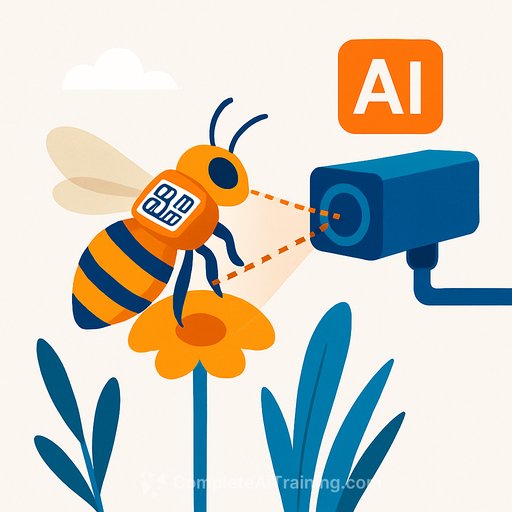Tracking Bees with QR Codes and AI Cameras to Support Conservation
Scientists in Oregon are using innovative technology to monitor bee populations, aiming to address their alarming decline. By attaching button-sized QR codes to hundreds of bees, researchers gain precise data on these vital pollinators. This project combines artificial intelligence (AI) and targeted tagging to streamline bee tracking in natural environments.
Why Bees Matter
Bees are essential pollinators for many U.S. crops, including coffee and almonds. Their activity directly affects agricultural yields and ecosystem health. Yet, recent data from the U.S. Department of Agriculture reports a loss of over 50% of managed honeybee colonies in the past year—the largest recorded drop so far.
Innovative Tagging and Tracking Methods
At the University of Oregon, Associate Professor Lauren Ponisio leads a team studying bee decline by merging technology with ecological research. The process begins with capturing bees on a cannabis farm in Northern California. Using a "bee photobooth" setup—a microscopic station with a resting platform—the insects are gently chilled to reduce movement, photographed, and identified by species.
Each bee’s image and species data are encoded into a unique QR code, a technique already familiar in entomology for its efficiency over traditional tiny labels. These QR codes are hand-cut, applied with fine tweezers, and affixed using non-toxic nail glue. This method is lightweight and causes no noticeable disruption to the bees’ behavior.
AI-Powered Camera Network
To monitor the tagged bees, 20 AI-equipped cameras developed by Oregon State University are deployed across the farm. These cameras use pretrained models that recognize bee species based on images, improving their accuracy over time as they collect more data. The system reduces reliance on manual netting, saving researchers hours and expanding coverage.
- AI models help identify species without taxonomists needing to be physically present.
- Cameras are installed near artificial flowers designed to attract bees.
Challenges in Attracting Bees
Despite the technological advances, bees have shown reluctance to visit the camera stations. The fake flowers, though visually appealing in colors favored by bees, lack nectar rewards. As a result, bees quickly learn to avoid them.
Introducing real flowers near cameras could attract more bees but raises health concerns. Flowers act as transmission points for microbial parasites, risking contamination among the bee population. To address this, researchers are experimenting with ultraviolet (UV) light sterilization combined with nectar stations to minimize disease spread.
Future Developments
The team plans to enhance the system’s capabilities, incorporating night vision and improving functionality in areas with limited internet access. These improvements aim to make bee tracking more reliable and scalable in diverse environments.
“Bees are fascinating creatures with incredible diversity,” says Ponisio. “Being part of research that could support their survival and, by extension, our agricultural systems is deeply rewarding.”
For researchers interested in AI applications in ecological monitoring, exploring specialized AI courses can provide valuable skills to engage in similar projects. Resources such as Complete AI Training’s latest courses offer practical knowledge on AI-driven data collection and analysis.
Your membership also unlocks:






